50 years of dance together, as a couple and as leaders in Rock’s world of dance
I have known these stars of Olde Tyme dancing on the Rock – Ana Maria and Curro Morro – well, like forever. They live in my area of town – and I often see them, and we chat or say hello, and we move on to wherever we are going. As a journalist I wouldn’t dare to say how many times I have interviewed these friends of mine or written about them. And now, here we are again. On celebrating 40 years I called their achievement in dance “a most important milestone”, now on celebrating 50 years of dance I would say this is more of a triumph of the fittest, of commitment, of achievement – both mentally and physically – a true celebration as they keep on dancing through the ups and downs of one’s journey through life.
50 years is a long time, and when the celebrations began earlier this year, I knew I had to make room on Alice’s Table to sit them down and have a chat. Both are easy to talk to, and chatty. I have seen many people come and go in my area of town, but they are a constant – reassuring faces, a reminder that some things in life can remain the same for a long time – that is, not just on Governor’s Street, but also on the dance floor.
They both firmly believe in the power of dance. All the positiveness it brings. I wrote a piece about them in lockdown – in the Covid months – when they kept healthy by dancing up on their terrace whilst helping us through the madness of the time because their love of dance.
2025 is a most special and extraordinary year for them and not just because they still enjoy dancing but because they have inspired and encouraged so many others to do the same - to weekly put on their dancing shoes. For it is not just 50 years on the dance floor but also as Leaders and Instructors of the CCC Modern Sequence Dance Club – 1975 to 2025. Now, that’s what we can call commitment but let’s add passion and love – not just for each other but for all the dance moves which keep them young, fit and healthy.
I’ll lead you onto the dance floor shortly but first let’s begin with what we may not know about Ana and Curro. They first met when they took up dancing at the club. Curro joined in 1971, and Ana arrived in 1973.
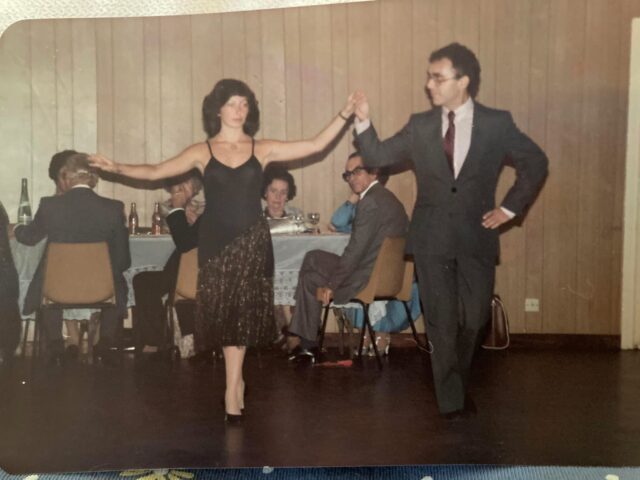
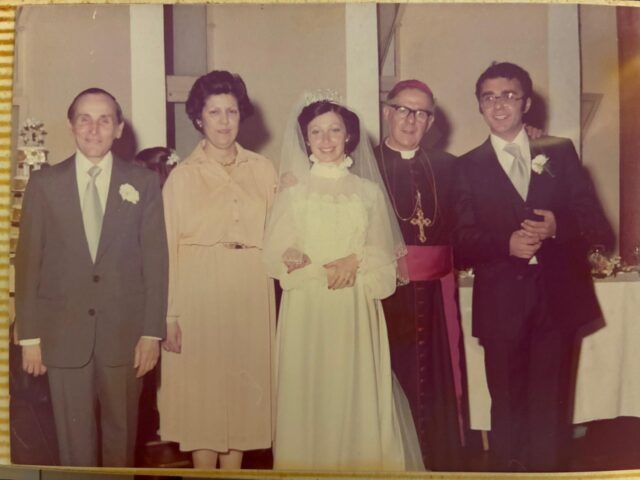
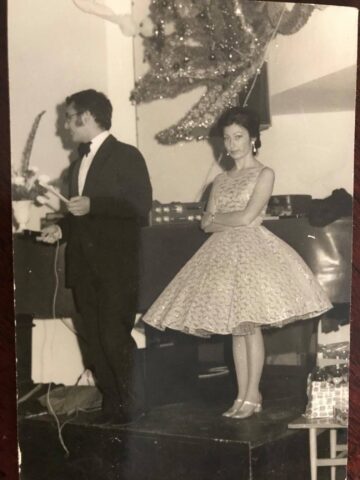
Ana, born in 1955 was an only child. She grew up on Governor’s Street with her extended family. Her upbringing was peaceful, in a close-knit family and religious environment. The family had lived in the family home for generations and her father Alfredo and even her grandfather were born where she still lives today. Her family home was typical of the period where several generations lived under the same roof. Both Ana and Curro knew each other from a young age – living in the same area of town – and their families knew each other as well. Ana was a student at St Mary’s and remained in school up to the Green Convent. A good student – she nevertheless tells me that although her friends were ready to further their education in the UK, she had no desire “no vocation” to further her studies (she would eventually give it all to dance, and maybe that’s what she was waiting for).
“I stayed on to do my A Levels just because I liked school and waited to see if I had any ambition to move onto a career, but it didn’t interest me at all. To be honest, having to live in England for three years put me off, so I soon joined the dance club which I always enjoyed. I knew I wanted to stay in Gibraltar,” she says.
On leaving school she would work in administration and held several jobs over the years at Shell, the old Ice Box and at the Cathedral of St Mary the Crowned in Bishop Rapallo’s time who would marry her and Curro in the same church.
Her late mother Eulalia was a stay-at-home mum and her father Alfredo worked in the Finance Department at the Naval Base. Her mother’s father (her grandfather) was the owner of the famous Smokey Joe in Turnball’s Lane – John Gomez.
Hers was a very musical family. Her father played the violin, her mother the piano and the accordion, and went to singing and dancing lessons. She tells me good quality music was always being played in the home so when Curro and her eventually took over as the Leaders of the dance club it was quite easy to choose tunes for the dances.
“I already had a good idea of what good music was all about,” she smiles.
Curro was the older of two siblings. There was him and his sister Carmen. His mother Matilde (Danino) was a stay-at-home mum while his father was a Staff Manager at the old NAAFI then along Queensway. His too was a very close knit and religious family. His name he tells although spelt MORRO – at one time may have had an OW at the end – making it Morrow.
“My father (Francis ‘Curro’) always told me it was Irish and when my grandfather arrived here from Menorca having come down through Spain the OW seems to have been lost. He married my granny who was Infante, a cousin of the famous Blas Infante and the Andalusian socialist politician from Casares who was killed at the start of the Spanish Civil War.”
Curro too has always lived in my area of town – Cornwall’s Parade and Governor’s Street and would even play football with friends in Gavino’s Passage.
His father was a victim of the 1951 Bedenham explosion when he worked in the NAAFI – Navy, Army and Airforce Institute. Originally by the Imperial Court where Queensway Quay is today, after the explosion it would move to the area of the Key and Anchor at Ince’s Hall where the Gibraltar International Bank is today.
“My father was in the office at the time of the explosion. He went to move his car from where he had parked it that morning and there was this massive explosion which destroyed the car. He seemed alright but several scratches appeared on his face. The area would become cancerous within a year. A patient in the UK, he was told this type of cancer could have happened following a major blow. We could never prove it was as a direct result of the Bedenham explosion but part of his cheek bone and upper jaw had to be removed, he lost one eye, and his face had to be reconstructed, and he had to wear a plastic mask for the rest of his life. I was very young, and his look became part of my normality growing up. He carried on working and I remember my mother cleaning his wound daily,” he recalls.
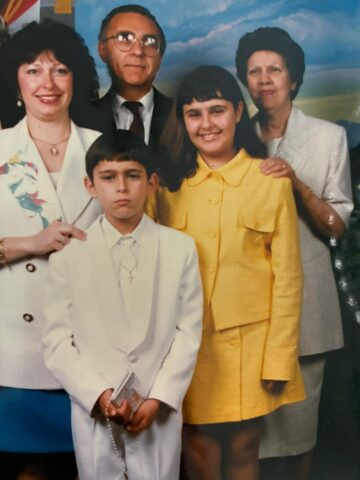
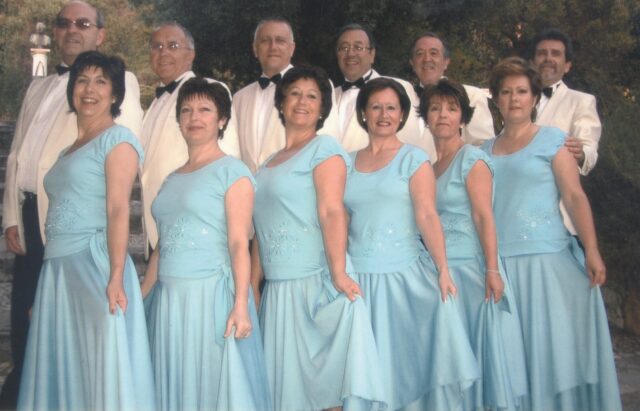
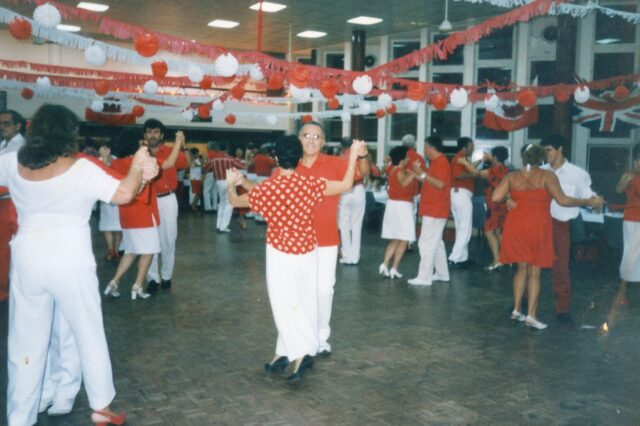
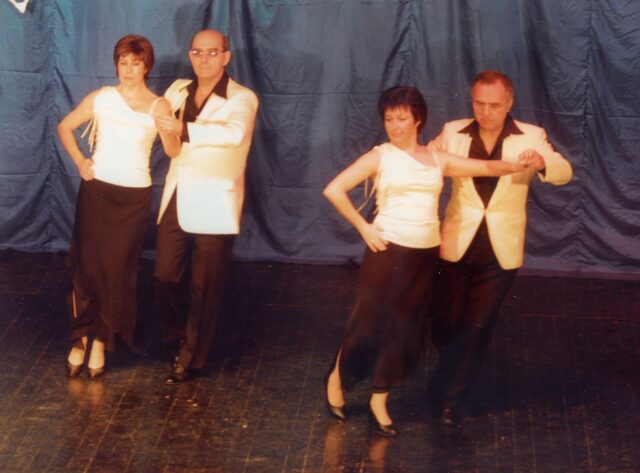
Curro was just starting school in Castle Road with Dorita Montegriffo, later moving to Bishop Fitzgerald. Influenced by his father who had been a rower Curro joined the Calpe Rowing Club and rowing became a major part of his life growing up in his teen years. Curro would leave school straight after his exams to work in Barclays Bank until his retirement. At one time he was the Chief Dealer for foreign currency.
Curro was also a runner, one of the original runners of the Lourdians Athletics Club. Years later he would take up marathon running. He completed three London Marathons in the early 1980s and also participated in many half marathons and international long-distance races in Gibraltar, UK and Spain. A dedicated rower at the Calpe Rowing Club since 1961 he later became a qualified Rowing Coach under British Rowing. His success and dedication to coaching was recognised when he was awarded a BEM for services to this sport.
As we return to dance – which is what both of them really enjoy chatting about. Ana Maria reminds me Curro joined the club in 1971, and she joined at the beginning of 1973. They instantly got on.
“The ambience, the relaxed and friendly, just captivated each of us. In the early 1970s there were many young men and young women in the club, and we learnt a variety of dances and would dance with different partners. We would all help each other while calling out the steps. By 1973 Curro and I had become a couple, and not just on the dance floor.”
In 1975 when the previous Leaders of the Club left Gibraltar Ana Maria and Curro were appointed Leaders/Instructors. Their first evening as Leaders was Monday 19 May 1975 – the club was still based at the Catholic Community Centre before its move to Central Hall.
“We were very young and suddenly we were pushed to become Leaders. But we liked it and were challenged by it all. We kept on dancing and growing as a couple.”
They were married in 1979. Their children Cathy and Alfred were born in 1984 and 1988 – the support they received from their family meant they could keep on dancing. Today they have two grandchildren, Lucia aged 8 and Gabriel aged 3.
The couple explain how the late Bishop Edward Rapallo encouraged young local couples to create a dance club when the Catholic Community Centre was built. Some members of the DSA Sequence Dance Club took up the challenge and formed the Catholic Community Centre Sequence Dance Club. There were few couples when Curro first joined. But the club grew and grew – and although it’s a social event where everyone has a good time, it also has its serious side. She recalls the members always being very helpful in calling out the steps so they could learn the variety of dances and steps involved. Shortly after 1973 Curro was sent to London by his employers to do a four-month course and in his spare time he decided to attend classes at the Rita Pover Dancing School. This proved invaluable. He learnt dance technique and new dances. This would help a great deal when shortly after his return – when he and Ana took charge of the club.
They both agree in unison: “This was the moment that our lives changed. We went from dance members to Instructors. It was a huge step in our dancing lives. From that moment on we committed ourselves to serve the members of the club.”
They both recall that when they joined the club dance tempos were generally slower.
“We introduced a great deal of Latin American dancing to Sequence. The Dance Programmes became more varied. A typical Monday night Programme would include a Waltz, a Tango, a Cha Cha Cha, a Quickstep, a Mambo, a slow Saunter, a Jive, a Rumba, a Swing, a Samba and an easy Party Dance for beginners. We provided dances to suit all tastes which made it even more enjoyable for everyone.”
Back in the day they would record different sections of music on cassette. The club bought a special record player so that the tracks could be slowed down.
“We lived to dance and thoroughly enjoyed it. It was demanding because we had to know what we were going to do every week and learn the steps ourselves so we could then teach a new dance every three weeks.
“We had to study all the dances – Tango, Waltz, Quick Step and Cha Cha Cha – there was no YouTube then – and we would buy the records when we travelled to the UK – we bought the records of the bands and orchestra from – Joe Loss, Geoff Love, Sidney Thomson, James Last, Sidney Mitchell and many others.
Later we adapted the music to the songs we liked for the many dances – such as the songs of Al Bano and Romina Power.
Both agree, that although maintaining the standards, and the commitment throughout all these years – dance in a big way also supported their marriage and made the bond stronger.
“It does for everyone – it brings people closer together – music and dance is therapeutic – and good for the soul.”
Programmes such as Strictly Come Dancing have resulted in more people appreciating dance. It helped to promote and make people aware of its positive nature – “it was an eye-opener for many people” they say.
“The idea of ‘Old Time Dancing’ would put off certain people but Strictly has done away with the concept that this type of dancing was only for the older generation. As a matter of fact, you do need to be reasonably fit to dance through all the dances. It is a great way to socialise with friends, make new ones and keep fit.
Ana and Curro also started a Junior Club which was very successful. Initially over 120 children joined. They also formed a Dance Formation Team of ten couples - during the closed frontier years they would spend hours on Sunday afternoons at the Catholic Community Centre. The formation team even found them dancing on TVE1 in the programme ‘Raices’ amongst other shows. Some years back they formed part of the ‘Let’s Dance’ television show – GBC’s answer to Strictly – and where Curro enjoyed his time as one of the judges.
The couple see their weekly dance commitment as an important service to the community. There is no doubt it is a major part of their lives – rewarding, offering self-satisfaction and making them happy.
“It is wonderful to see people enjoying it so much – it is soul uplifting – it is like a weekly reward, and our enjoyment is seeing them get better every week and enjoying themselves.”
Over the years they have been involved in many presentations and charity events.
When it comes to choosing their dance – they admit they have no favourites.
“The dances we teach have different rhythms e.g. Tango, Quickstep, Saunter, Rumba Cha Cha Cha, Mambo etc. They each have their own charm, and we put our all into choosing good tunes and trying to simplify the steps. Having said this, we love many other types of music and dance. We like orchestras like Andre Rieu, singers like Ed Sheeran, Reggaeton rhythm, Turkish Dancing, your name it, we like it.”
They have never charged for teaching or running the dance sessions. It is all about their love of dance and making people happy.
“Curro prefers Ballroom whilst I prefer Latin American. Curro enjoys the slow Waltz and the Tango. I prefer the Rumba Bolero and Cha Cha Cha. Both categories of dances are popular in our club and our programmes each week consist of a varied selection of Modern Ballroom and Latin American dances to suit all tastes.”
Even after all these years they are still encouraging couples to give it a try. They don’t ever want to stop – and why should they? They are ready to give many more hours of enjoyment to all those who want to keep on dancing. They are not ready to hang their dancing shoes. In fact, this couple has their dancing shoes by the door, always ready to go… I reckon I will be still writing about them in 10 years’ time… and just for the moment let’s just find our steps… one, two three, and one, two, three, and one, two, three, and here’s to many more years on the dance floor.









